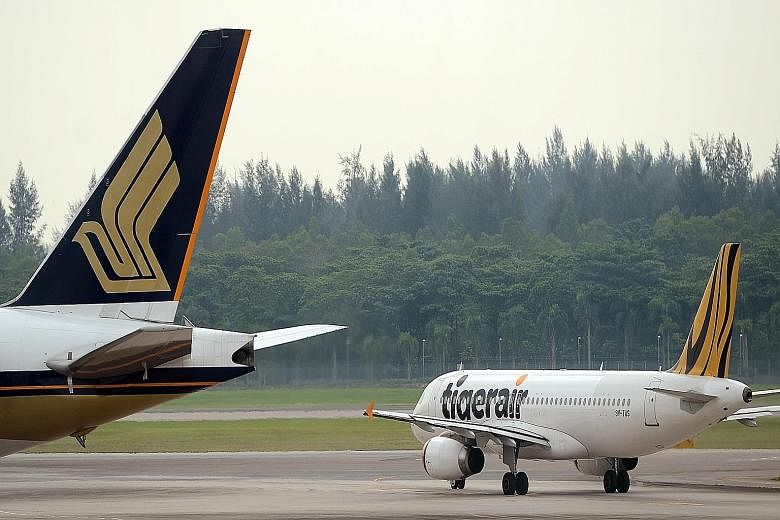When Tiger Airways launched its initial public offering (IPO) in January 2010, investors took to it enthusiastically. Priced at $1.50 a share, the public tranche of the IPO was oversubscribed by 21 times.
Institutional investors were less exuberant, although shares in that allotment were oversubscribed by more than four times.
Suffice to say, there was hope that the low-cost airline would take off and bring shareholders along with it for the ride.
For the first day at least, things looked good. It started trading on Jan 22 and closed at a high of $1.58, eight cents above its listing price.
But after five years of sputtering, the reality is that Tigerair never really took off. What went wrong?

The signs of trouble were there from the very beginning, if investors had cared to look.
First was the company's weak financials.
Tigerair had racked up losses of more than $50 million in the 12 months to March 31, 2009, and reported a further net loss of $8.3 million in the six months to Sept 30, 2010. At the time of listing, Tigerair had accumulated losses of $127 million, holding just $13 million in cash while its net liabilities stood at more than $109.5 million.
It was unusual for a company looking for a listing to report such weak balance sheets.
When asked about the worrying numbers back then, Tigerair chief executive Tony Davis brushed the concerns aside, saying it was the normal start-up costs associated with its Australian business that began in 2007.
Second, the company's backers could have lulled investors into a false sense of security.
Blue-chip stalwart Singapore Airlines (SIA) was one of the main shareholders in pre-IPO Tigerair.
Singapore investment giant Temasek Holdings also held significant stakes.
But less than a year after the listing, other key shareholders started to bail out and alarm bells should have started ringing.
Mr Davis, Indigo Singapore Partners and Ryanasia sold 40 per cent of their shareholdings.
Over the next year, other institutional shareholders also continued to pare their stakes.
In early 2011, Ryanasia cut its holding from 5.41 per cent to 1.99 per cent, while later that year, Schroders and Capital Group also reduced their stakes.
These were sure signs that the company was facing difficulties, and big shareholders who would have a clearer view of what was going on in the company wanted out.
The third alarm bell was the number of cash calls the company made over the years.
In its five years on the stock market, Tigerair rolled out three rights issues, raising more than $680 million from shareholders.
Last Friday, SIA, which has a 55 per cent stake in the firm, offered 41 cents a share to take over the company and delist it from the stock exchange.
At this price, investors who had bought during the IPO at $1.50 would be staring at a staggering loss of over 70 per cent.
If they had subscribed to all the rights issues, excluding the convertible bonds that were also offered, the loss would be about 50 per cent.
To be fair, the past five years have not been kind to airlines around the world, with volatile oil prices and a global economic recovery that never quite took hold.
Regardless, for investors who bought in on the hope of blue skies back in 2010, the promise of a smooth journey turned into one marked by turbulence instead.


